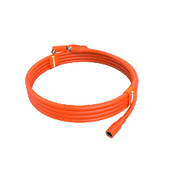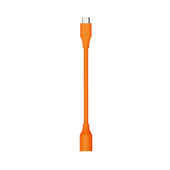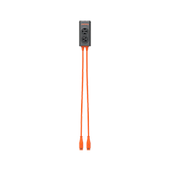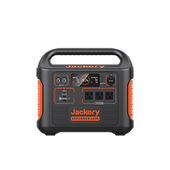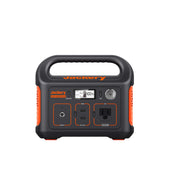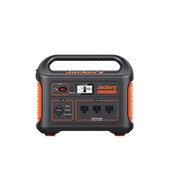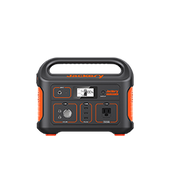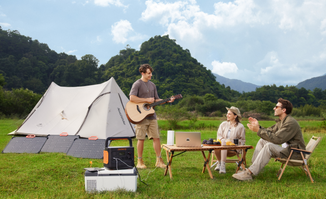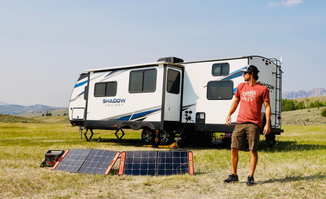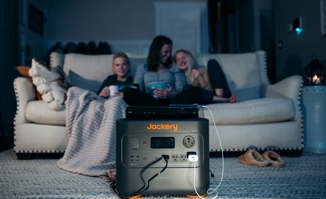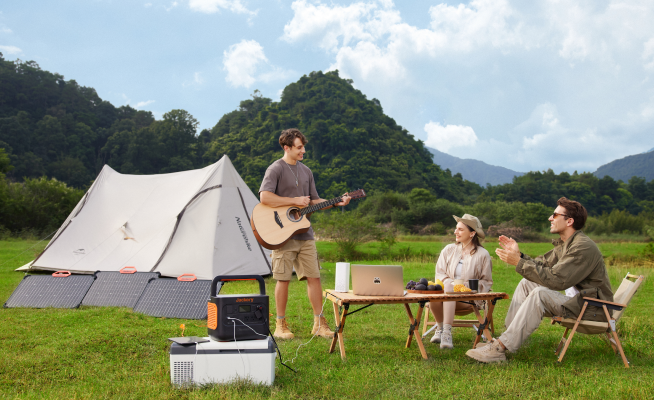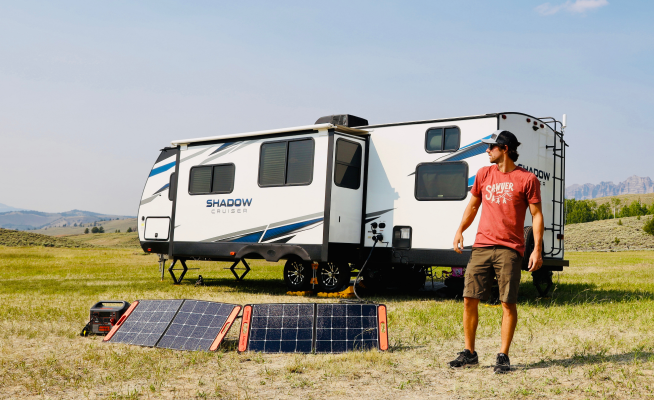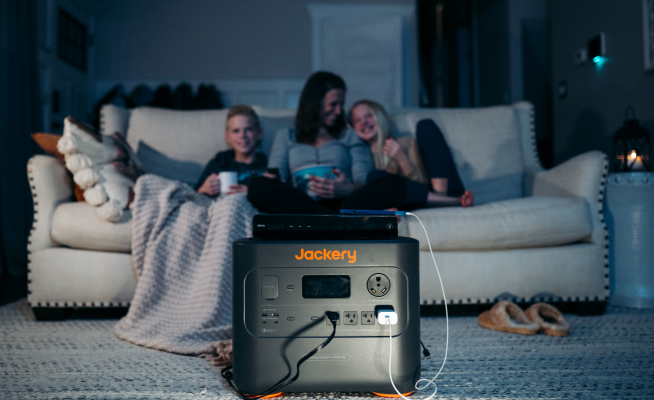Solar Powered Electric Blanket vs. Solar Generator for Electric Blanket
Have you ever thought about snuggling in a warm electric blanket on a chilly night but hesitated due to electricity bills? Or perhaps you are an outdoor enthusiast looking for a way to stay cozy on camping trips? If yes, it's time to choose a solar-powered electric blanket!
A solar-powered heated blanket uses solar energy to generate electricity that eventually heats up the blanket. On average, an electric blanket consumes 100-400 watts of power, depending on its size, brand, and model.
The best way to charge the electric blanket is by using a solar generator. Jackery Solar Generators come in different sizes suitable for powering various appliances, including but not limited to electric blankets.

In this guide, we will reveal what solar-powered electric blankets are, how they work, and the differences between solar-powered electric blankets and solar generators for electric blankets.
What Is A Solar Powered Electric Blanket?
Before we dig deep into the differences, let us cover some basics.
An electric blanket is a bedspread or throws composed of heavy, sturdy material with an internally integrated wiring system. The electric heating system is charged by solar energy or electricity to offer you heat and warmth. You can generally plug these blankets into electric outlets and set them in different heat levels.
On the other hand, a solar-powered electric blanket uses solar energy to generate electricity and heat up the blanket. It helps you to reduce your reliance on traditional energy sources, helping you live sustainably. The PV cells in solar panels work by absorbing sunlight and converting it into electricity which charges the blanket.
Solar Powered Electric Blanket Vs. Solar Generator For Electric Blanket
Investing in economical and sustainable electric blankets is the best way to minimize electricity bills. Aside from reducing the carbon footprint and utility bill, solar power heated blankets offer multiple other benefits. They are portable and safe solutions that keep you warm during traveling. In addition, they are lightweight and make it easy to carry anytime, anywhere.
Before we dig deep into the main differences between solar-powered and solar-generator electric blankets, here is a comprehensive table of pros and cons.
|
Types |
Pros |
Cons |
|
Solar Powered Electric Blanket |
- Portable and lightweight. - Inverter or energy storage system is not required. - Easy to use and affordable. - Built with durable materials that can withstand wear and tear. |
- Only works when the sun shines. - May not provide enough warmth during extremely cold conditions. - Limited power output, so it may not charge large appliances or multiple devices. |
|
Solar Generator for Electric Blanket |
- Can power multiple devices, including large appliances. - Provides reliable and consistent power output. - Comes with a portable energy storage system to charge electrical devices during the night. - Safe to use - Quiet and Clean Energy |
- High initial investment |
Solar-Powered Electric Blanket
A solar-powered electric blanket is specially designed to provide warmth and comfort to users, especially when they are away from traditional power sources. It is one of the most popular choices among campers and outdoor enthusiasts who want to stay warm on frosty winter days.
Features Of Solar-Powered Electric Blanket
Below are a few features of solar-powered electric blankets:
- Solar panels are typically built into or attached to the blanket using cables.
- The solar panels convert sunlight into electrical energy to power heating elements inside the blankets.
- The blankets come with temperature controls or adjustable settings so you can customize the heating level.
- As they are portable and lightweight in nature, people prefer electric blankets for hiking, camping, and other outdoor activities.
Pros
- Portable and convenient for outdoor use.
- Environmentally friendly and sustainable.
- Does not require any traditional power source.
Cons
- Only works when there is sufficient sunlight available.
- They are dependent on sunlight to charge, which may limit their use during cloudy weather and nights.
- May not be suitable for areas with extremely cold temperatures.
- Limited in terms of heating power and duration.
Solar Generator for Electric Blanket
Solar generators for electric blankets are an eco-friendly and renewable energy source. They combine solar panels and portable power stations to charge blankets.
As climate change is impacting the planet in the form of extreme weather, rising sea levels, and high temperatures, people are looking for sustainable solutions to charge appliances.
The market for solar generators has been growing in recent years, especially due to the high demand for environmentally friendly solutions.

Jackery Solar Generators come in various sizes and capacities. For electric blankets, you can choose Jackery solar generator 1000 Pro, Jackery solar generator 500, and Jackery solar generator 300.
Features Of Solar Generator Electric Blanket
- Solar generators can charge small and large devices, including electric blankets, mini coolers, refrigerators, etc.
- They are safe for indoor use as they do not emit any toxic gases.
- They do not emit loud noises like traditional gas generators.
Pros
- Solar generators are clean, quiet, and safe.
- They can power multiple devices simultaneously, thanks to numerous ports.
- They do not require fuel, making them cost-effective and eco-friendly solutions.
- They are easy to carry and portable.
Cons
- The solar generator requires a relatively higher initial investment.
How Many Watts Does an Electric Blanket Use?
The electric blanket generally consumes around 100-400 watts of power to keep you warm during cold nights. It would cost approximately 15-30 cents to use the electric blanket every night, depending on the location where you reside.
Kilowatt-hour (kWh) measures energy consumed by a 1000-watt appliance running for one hour. It is the standard unit of electricity consumption measurement and is used to calculate the cost of electricity usage.
Let us calculate kWh with an example.
Here the electric blanket will consume 150 watts per hour and run for 6 hours a day.
kWh = 150 W × 6 hours of running / 1000 = 0.9 kWh.
Average Cost = kWh × 15 cents = 0.9 kWh × 15 = 0.13 cents.
Suppose you are using an electric blanket with 150 watts of power for a total of 6 hours every night and for 4 months per year; the energy consumption will be around 108 kWh per year.

When we weigh the energy usage against other home appliances, this one is higher. For instance, a washing machine with a power rating of 1500 watts daily will use around 547.5 kWh over a year.
How Much Does It Cost To Power An Electric Blanket?
Electric blankets that feature built-in solar require low energy consumption to distribute heat. However, the exact power bill of the electric blanket will depend on how high the heat setting you choose.
Generally, the electric blanket will consume roughly 17 watts on the low setting, 35 watts on the middle setting, and 70 watts on the high setting.
To calculate the exact cost of an electric blanket, you need to check the price per kilowatt-hour in your location. Then, multiply the power (or watts) of an electric device by the number of hours you wish to run it.
Remember, the energy usage you get will be in watts. So divide the number by 1000 to convert watts to kilowatts.
|
|
Usage (kWh) |
Cost ($) |
|
Per day |
0.3344298246 |
$0.03484758772 |
|
Per month |
10.16666667 |
$1.059366667 |
|
Per year |
122 |
$12.7124 |
How Much Solar Power Does An Electric Blanket Need?
Let us suppose a typical electric blanket utilizes up to 200 watts per hour, depending on the user setting. When you use the blanket for 10 hours, the device will use up to two-kilowatt hours of power.
Depending on your location, the price will be around 15 to 30 cents.
The power consumption of the solar-powered electric blanket at around 50 watts for 8 hours will be approximately 0.35 kWh, which is relatively low compared to other appliances.
Below we evaluate the daily power consumption of an electric blanket and some other appliances.
|
Product |
Watts |
Length of Time |
Daily Power Consumption |
|
Electric Blanket |
100 W |
6 Hours |
600 Wh |
|
Mini Cooler |
60 W |
5 Hours |
300 Wh |
|
Coffee Maker |
550 W |
0.5 Hours |
275 Wh |
|
Electric Grill |
900 W |
0.5 Hours |
450 Wh |
|
Laptop |
100 W |
4 Hours |
400 Wh |
Jackery Solar Generator For Electric Blanket
Electric blankets are the perfect companion to stay comfortable during frosty weather conditions. But charging them becomes a significant concern, especially during power outages or outdoor activities. That's where Jackery Solar Generator comes in!
Jackery offers a wide range of solar generators that vary in size and capacity. For instance, Jackery Solar Generator 300 has a battery capacity of 293Wh. This means you can charge a 100-watt electric blanket for approximately 2.5 hours.
If you need more power, you can choose the Jackery Pro series, which includes Jackery Solar Generator 1000 Pro, Jackery Solar Generator 1500 Pro, and Jackery Solar Generator 2000 Pro. You can calculate the operating time of the device by multiplying the battery capacity by 0.85 and then dividing it by the watt hour used by the device.

Below we cover the basics of all the best Jackery Solar Generators.
|
Series |
Capacity |
Ports |
Electric Blanket Watts |
Hours |
|
1002 Wh |
AC Output: 110VAC, 60Hz, 1000W (2000W Surge) USB-A Output: 5V, 2.4A Quick Charge 3.0 Output: 5-6.5V, 3A / 6.5-9V, 3A / 9-12V, 1.5A USB-C Output: 5V, 9V, 12V up to 3A Car Output: 12V, 10A DC Input: 12V-30V (200W Max) |
100 Watts |
8.5 hours |
|
|
1002 Wh |
AC Output: 120V, 60Hz, 1000W (2000W Peak) USB-A Output: Quick Charge 3.0, 18W Max USB-C Output: 100W Max, (5V, 9V, 12V, 15V, 20V up to 5A) Car Output: 12V, 10A AC Input: 120V, 60Hz, 15A Max DC Input: 12V-17.5V, 8A Max, Double to 16A Max. 17.5V-60V, 11A, Double to 22A/800W Max |
100 Watts |
8.5 hours |
|
|
1534 Wh |
AC Output: 110VAC, 60Hz, 1800W (3600W Surge) USB-A Output: 5V, 2.4A Quick Charge 3.0 Output: 18W, 5-6.5V, 3A / 6.5-9V, 3A / 9-12V, 1.5A USB-C Output: PD60W, (5V, 9V, 12V, 15V, 20V up to 3A) Car Output: 12V, 10A DC Input: 24V, 10.5A |
100 Watts |
13 hours |
|
|
1512 Wh |
AC Output: 120V, 60Hz, 15A, 1800W (3600W Peak) USB-A Output: Quick Charge 3.0, 18W Max USB-C Output: 100W Max, (5V, 9V, 12V, 15V, 20V up to 5A) Car Output: 12V, 10A AC Input: 120V, 60Hz, 15A Max DC Input: 11V-17.5V, 8A Max, Double to 8A Max. 17.5V-60V, 12A, Double to 24A/1400W Max |
100 Watts |
13 hours |
|
|
2160 Wh |
AC Output: 120V, 60Hz, 2200W (4400W Peak) USB-A Output: Quick Charge 3.0, 18W Max USB-C Output: 100W Max, (5V, 9V, 12V, 15V, 20V up to 5A) Car Output: 12V, 10A AC Input: 120V, 60Hz, 15A Max DC Input: 11V-17.5V, 8A Max, Double to 8A Max 17.5V-60V, 12A, Double to 24A/1400W Max |
100 Watts |
18 hours |
Solar Powered Electric Blanket FAQs
Now that we have discussed the solar power heated blanket, here are a few frequently asked questions by the buyers.
What size of solar generator do I need to power an electric blanket?
The size of the solar generator required to charge an electric blanket will depend on multiple factors, such as size, features, running time, etc.
To help you understand better, here is the simple mathematical formula for size calculation.
Let us assume that you are using Jackery Solar Generator 1000 Pro, which has a capacity of 1002 Wh.
Working time = 1002 Wh × 0.85 / operating wattage of an electric blanket.
If the electric blanket consumes 100 watts of power, then the working time will be:
Working time = 1002Wh × 0.85 / 100 = 8 hours.
However, it's worth noting that the pass-through charging feature of Jackery Solar Generator will help you charge appliances even if it is plugged in for charging.
Depending on how long you wish to run your appliances, you can pick the right size of solar generator.

Are solar-powered generator for electric blankets safe?
Yes. Jackery solar generators adopt an intelligent BMS system and pure sine wave inverter to provide 12 layers of protection to charging devices. The unrivalled cooling system and up to 9 temperature sensors ensure an industry-leading 30% dissipation efficiency rate. A 94V-0 fire rating and UL standard drop design also means the product is extremely sturdy.
Is it worth using a solar generator for an electric blanket?
In a word, yes. Using a solar generator to charge an electric blanket is a safe, practical, and sustainable way to power appliances. Jackery is a well-known brand that manufactures solar generators to power up small and large appliances like electric blankets. As it is a quiet, safe, and portable charging solution, you can use the solar generator to power appliances during power outages, camping, and other outdoor adventures.
Final Thoughts
When it comes to staying warm and comfortable on winter days without electricity, you are left with two best options: a solar-powered electric blanket or a solar generator for an electric blanket.
Disclaimer:
The runtime mentioned for appliances powered by Jackery is for reference only. Actual runtime may vary under different conditions. Please refer to real-world performance for accurate results.






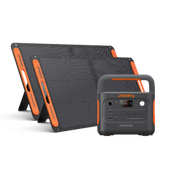


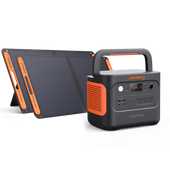

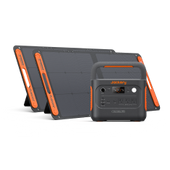
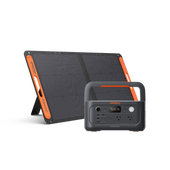
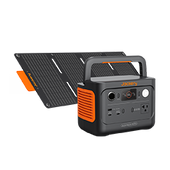
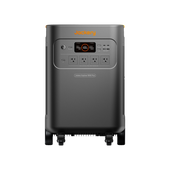
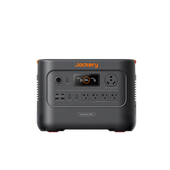
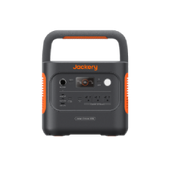
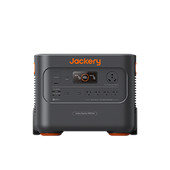
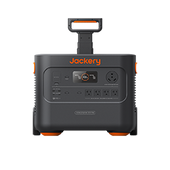

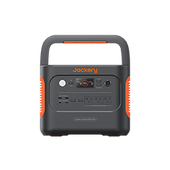
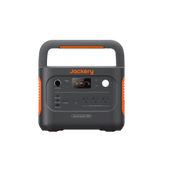
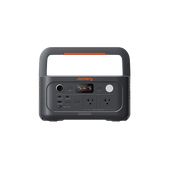

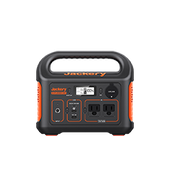
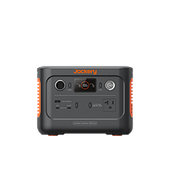
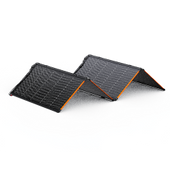
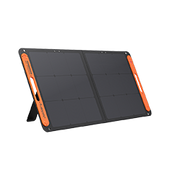

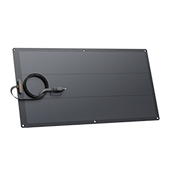
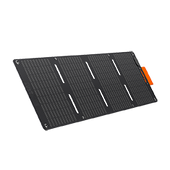
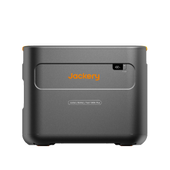
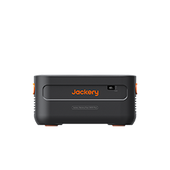
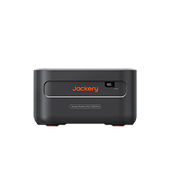
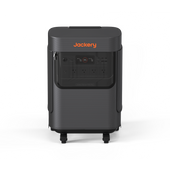
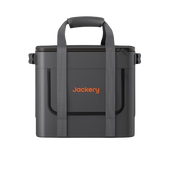
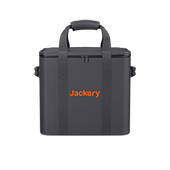
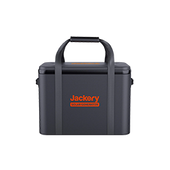
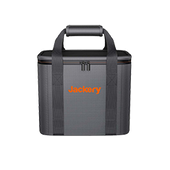
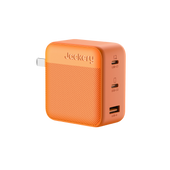
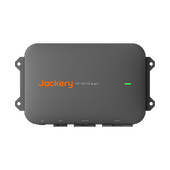
![[Add-on] Jackery Manual Transfer Switch for Explorer 5000 Plus](http://ca.jackery.com/cdn/shop/files/add-on-jackery-manual-transfer-switch-for-5000-plus-240V.webp?v=1757043692&width=170)
